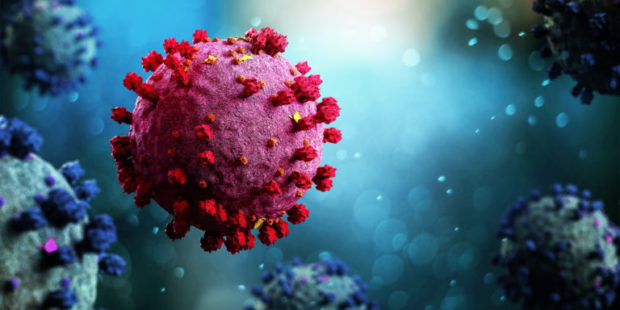The medical profession in New Hampshire is accusing the insurance industry of using “junk science” in justifying its denials of COVID-related business insurance claims.
In an amicus brief in a case between a hotel chain and eight insurers, the New Hampshire Medical Society blasts the insurers and the industry trade group the American Property Casualty Insurance Association (APCIA) for using what it calls “scientifically unsupported statements” that “minimize the severity” of COVID-19 and “falsely” claim that the virus can be easily removed by surface cleaning or dissipation.” Their statements are, at best, scientifically inaccurate, and frankly, are more accurately described as “‘junk science,'” says the medical society’s brief.
The medical group says it has no view on whether certain insurance policies cover such business losses, but it does take issue with the industry’s explanations.
APCIA did not reply to a request for reaction to the medical society’s criticisms by press time.
The medical group filed its brief in a case now on appeal before the New Hampshire Supreme Court involving the Schleicher and Stebbins Hotels chain and eight insurers that issued policies that combined afforded $600 million in coverage.
The issue before this and other courts centers on whether the presence of COVID-19 inside a property can cause “direct physical loss of or damage” to that property as required to trigger coverage in the insurance policies.
The insurers are appealing a partial summary judgment that the Merrimack County Superior Court granted the hotel firm last June. That lower court followed a New Hampshire Supreme Court precedent from 2015 (Mellin v. Northern Security Insurance Co.) involving cat urine in holding that the virus changed the hotel’s properties. Judge John C. Kissinger rejected the insurers’ argument that changes to property “must be readily perceptible by one of the five senses, be incapable of remediation, or result in dispossession.” Citing the 2015 case, he ruled that coverage is triggered where there is a “distinct and demonstrable alteration” to property.
Judge Kissinger dismissed the claims against one of the insurers — AXIS Surplus Lines Insurance — because its policy contained a pollution exclusion that encompasses viruses. However, he upheld the coverage claims against the remaining seven insurers that are appealing: Starr Surplus Lines, certain underwriters at Lloyd’s, Everest Indemnity, Hallmark Specialty, Evanston Insurance, Scottsdale and Mitsui Sumitomo Co. of America.
Schleicher and Stebbins Hotels own 23 properties in Massachusetts, New Hampshire and New Jersey. The firm was forced to close its operations for periods during the pandemic due to government shutdown orders in these states. Even after the hotels were permitted to reopen, they were subject to restrictions such as bans on weddings and business functions and being allowed to accept in-state guests only.
The hotel firm argued that the policy language “loss or damage” and “direct physical loss of or damage to property” are ambiguous and must be interpreted in its favor. The firm also argued that the New Hampshire Supreme Court previously interpreted “physical loss” not to require structural damage but only a showing of a “distinct and demonstrable alteration of the insured property.” Its property contaminated with COVID-19 was both “distinct” from unaffected property and “demonstrably” so, the hotel chain added.
Insurers argued that any “distinct and demonstrable alteration” must be readily perceptible by one of the five senses, must not be capable of remediation, and must result in some dispossession.
The superior court rejected the insurers’ arguments. It said physical loss includes not only tangible changes to a property but also changes that “exist in the absence of structural damage,” provided they are both distinct and demonstrable.
COVID-19, like cat urine, may be removed from the surfaces, but that does not mean the properties have not been changed, according to the court. While the virus may not have an odor, the virus can still be detectable on surfaces and thus qualifies as damage and direct physical damage under the policies, the lower court concluded.
The medical group society claims that, contrary to industry assertions, the virus cannot be effectively removed from surfaces by disinfection. Moreover, cleaning and disinfection are ineffective because the virus is “continuously and repeatedly reintroduced into the premises,” the brief states.
Also such methods do not remove the virus from the air, which it says is “its number one transmission vector.”
The medical society takes issue with insurers’ argument that the presence of the virus “does not render a structure uninhabitable.” That was not true before vaccines and treatments were widely available, according to the brief.
Furthermore, “just because the government allowed a business to remain open did not mean it was habitable. Rather, the government decided that the political or economic reasons for the business staying open outweighed the often-grave risk to life and health,” the brief continues.
Finally, the brief hits insurers for “trivializing” COVID-19 by comparing it to the common cold, insisting the “two are not comparable at all.”
The medical group sees false information as a threat to public health. “The briefs of insurers and the APCIA, unfortunately, spread exactly the kind of scientifically inaccurate information that cause our physician members’ patients to deny the seriousness of COVID-19, ignore the medical advice of our members, and fail to protect themselves against this deadly virus,” the society claims.





















 Is the AI Boom a Bubble Waiting to Pop? Here’s What History Says
Is the AI Boom a Bubble Waiting to Pop? Here’s What History Says  Breaking: Andersen to Replace Zaffino as CEO of AIG on June 1
Breaking: Andersen to Replace Zaffino as CEO of AIG on June 1  Berkshire Hathaway Enters Post-Buffett Era as Share Prices Fall
Berkshire Hathaway Enters Post-Buffett Era as Share Prices Fall  Five AI Trends Reshaping Insurance in 2026
Five AI Trends Reshaping Insurance in 2026 




